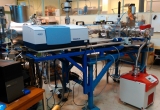INGMAR (IrradiatioN de Glaces et Météorites Analysées par Réflectance VIS-IR
You are here
All projects
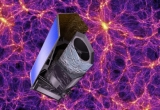
Euclid is an ESA mission that will map the geometry of the Dark Universe. The mission will investigate the distance-redshift relationship and the evolution of cosmic structures by measuring shapes and redshifts of galaxies and clusters of galaxies out to redshifts ~2, or equivalently to a look-back time of 10 billion years. In this way, Euclid will cover the entire period over which Dark Energy played a significant role in accelerating the expansion of the Universe.
Contact IAS: Nabila Aghanim & Hervé Dole
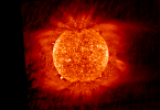
The Sun and its corona as seen by HECOR and HEIT: preliminary results.
Launched on September 14, 2009 from White Sands Missile Range (New Mexico), the Herschel sounding rocket was carrying two experiments with strong IAS participation: HECOR and HEIT.
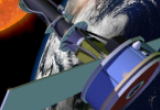
IRIS (Interface Region Imaging Spectrograph, NASA, launched in 2013) combines imagers and a spectrograph. The solar group gets interest in this mission for its diagnosis capacities of the solar plasma based on these two technics.
Contact: J-C Vial
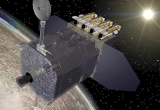
Data access: http://medoc-sdo.ias.u-psud.fr/
SDO: The Solar Dynamics Observatory is the first mission to be launched for NASA's Living With a Star (LWS) Program, a program designed to understand the causes of solar variability and its impacts on Earth. SDO is designed to help us in understanding the Sun's influence on Earth and near-earth space by studying the solar atmosphere on small scales of space and time and in many wavelengths simultaneously.
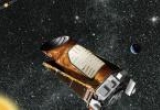
This mission (NASA, launched in 2009), following the path of Corot, combines also asteroseismology and the search of exoplanets. The stellar group is actively involved in the data analysis.
Contact: T. Appourchaux

CLASP (Chromospheric Lyman Alpha Spectro Polarimeter, NASA) is another rocket-borne instrument which objective is the measure of the polarisation of chromospheric Ly alpha radiation in order to measure the chromospheric magnetic field.
Contact: F. Auchère
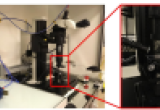
REMi (Reflectance d'Échantillons Microscopiques), spectroscopy device for microscopic samples in the visible and near infrared in a clean room.
Contacts : Zahia Djouadi, Cateline Lantz, Rosario Brunetto
The sample under the microscope is illuminated (via a fiber) by a halogen lamp, it reflects part of the light which is collected by a second fiber and routed to a spectrometer with a spectral range [0.45, 1.0] µm.
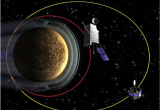
The BepiColombo mission was launched on October 19, 2018 for an arrival at Mercury in 2026. This ambitious mission will study all aspects of the closest planet to the sun, from interior to surface to magnetosphere. More details on the launch here.
Contacts : Yves Langevin, François Poulet, Mathieu Vincendon
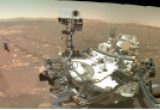
The Mars2020 / Perseverance rover is the NASA's 2nd large-scale in situ exploration mobile robotic mission. The rover is based on the Curiosity except that the mission will have the ability to encapsulate Martian samples that could be recovered later by another so-called sample return mission. IAS was in charge of the calibration of the near-infrared IRS point spectrometer developed by LESIA and IRAP within the SuperCam instrumental consortium led by Los Alamos (USA). IRS is the first near-infrared spectrometer on the surface of Mars. It is one of Supercam's major iinstruments and allows to constrain the mineralogical composition of rocks and Martian soil. We also actively participated in the selection of the landing site.
Contact: François Poulet



